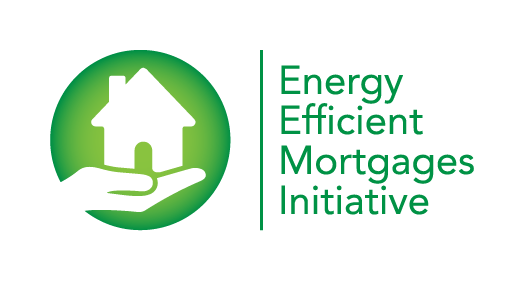
Energy Efficient Mortgages Data Reporting: a small step for banks, a big step for sustainable finance
By EMF-ECBC
Introduction
At the time this article is written, EeDaPP is at a turning point. By March 2019, the project will enter its second year, while its twin project, the Energy Efficiency Action Plan will successfully come to an end. At the same time, the Energy Efficient Mortgages Initiative Pilot scheme, the operational experimental phase involving more than 40 European banks and 50 institutions is entering a new determining cycle.
The interactions and synergies that took place between the two projects and the pilot scheme were determinant in achieving the first milestones of the EeDaPP project. In its first year, the EeDaPP partners, with the help of market stakeholders and pilot banks managed to fulfil their main objectives:
- Identify and list best practices in data storage, management and structuration, existing templates and protocol to build upon;
- Define a minimum set of energy efficiency reporting criteria to fulfil the reporting requirements for the Energy Efficient Mortgages Asset Class;
- Start defining and designing a standardised data protocol, collecting feedbacks from pilot banks.
Energy Efficiency minimum pan-European reporting criteria
The energy efficiency mortgage value chain is complex and fragmented, which is fully reflected in how data is being collected, managed, shared and reported. EEMI brings together a wide range and diverse set of individual stakeholders including lending institutions, borrowers, energy assessors, valuers and data warehouses, operating at different stages of the property life cycle who often have very different interests and priorities and typically tend to think and act in silos. Mainstreaming energy efficiency mortgages and linking it to sustainable finance requires to increase data accessibility, comparability and disclosure. Yet, in order to do so, the final reporting requirements must build as much as possible on the already wide range of information that banks need to report on for regulatory purposes. The extra mile that banks will have to provide to link the additional information on the energy performance of assets, a valuation method that include such “green” inputs and the traditional information reported on financial characteristics and performance at loan level must be facilitated and rationalise in order to reach a practical and effective implementation in the short-medium term.
With this operational constraint in mind, the EeDaPP consortium extracted a minimum core list of energy performance and efficiency criteria that can reflect, at European Level a fair assessment of the energy performance of the whole building stock (new and existing building, residential or commercial properties, individual or collective housing).
The following figure is displaying the data reporting structure, or “data tree” developed for EEM. It is made of three pillars; identifiers, financial and banking data and energy efficiency data. The additions to existing regulatory reporting requirements (from the European Central Bank, the European Banking Authority and the European Securities & Markets Authorities) are restricted to three core indicators: the Energy Performance Certificate, the “upgraded” property valuation assessment (taking into account energy performance criteria) and the link to existing public energy efficiency scheme (of European, National, or local level). Among those, the EPC is identified as the most important information for banks to collect, a small step in the reporting protocol and a huge step in linking the sustainable finance objectives to the real economy.


The publication of the White Paper in February 1st, detailing the reporting criteria list, its rationale and main principles is intended first and foremost to start a consultation with lending institutions, data providers, built environment professionals and other relevant market stakeholders to assess the relevance of the proposed data points, both mandatory and voluntary, their respective categorisations as such, and the feasibility of gathering, processing and disclosing them. In this sense, the protocol should be considered as a “living” list to be adapted and refined according to market feedback.
EeDaPP – Energy efficiency Data Protocol and Portal – is an initiative by the European Mortgage Federation – European Covered Bond Council (EMF-ECBC), Ca’ Foscari University of Venice, CRIF S.p.A., European DataWarehouse GmbH, Hypoport BV, TXS GmbH and SAFE Goethe University Frankfurt. This project has received funding from the European Union’s Horizon 2020 research and innovation programme under grant agreement No 784979.
Sitemap
Copyright © Energy Efficient Mortgages Initiative


The project DeliverEEM has received funding from the European Union’s LIFE 2023 programme under grant agreement No.101167431. The EeMAP, EeDaPP, EeMMIP projects have received funding from the European Union’s Horizon 2020 research and innovation programme under grant agreements No. 746205, No. 784979 and No. 894117 respectively
Privacy Overview
| Cookie | Duration | Description |
|---|---|---|
| cookielawinfo-checkbox-analytics | 11 months | This cookie is set by GDPR Cookie Consent plugin. The cookie is used to store the user consent for the cookies in the category "Analytics". |
| cookielawinfo-checkbox-functional | 11 months | The cookie is set by GDPR cookie consent to record the user consent for the cookies in the category "Functional". |
| cookielawinfo-checkbox-necessary | 11 months | This cookie is set by GDPR Cookie Consent plugin. The cookies is used to store the user consent for the cookies in the category "Necessary". |
| cookielawinfo-checkbox-others | 11 months | This cookie is set by GDPR Cookie Consent plugin. The cookie is used to store the user consent for the cookies in the category "Other. |
| cookielawinfo-checkbox-performance | 11 months | This cookie is set by GDPR Cookie Consent plugin. The cookie is used to store the user consent for the cookies in the category "Performance". |
| viewed_cookie_policy | 11 months | The cookie is set by the GDPR Cookie Consent plugin and is used to store whether or not user has consented to the use of cookies. It does not store any personal data. |

